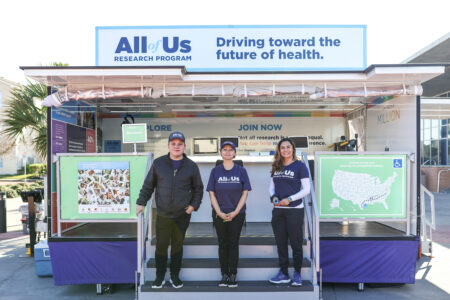
Share On Social!
As more healthcare systems consider implementing a social determinants of health (SDoH) screening program to care for patients’ non-medical needs, we at Salud America! at UT Health San Antonio are sharing important tips in developing such a program.
Today, we’re highlighting the role of the screener and how to identify healthcare staff most suited to screen patients for social needs.
While there is no evidence-based gold standard for how screening programs should be conducted or who should conduct the screening, lived experiences from clinics that have successfully implemented a SDoH screening program can help healthcare facilities make critical decisions in designing their own screening program.
We’ll be exploring the lived experiences of one of these clinics today.
Let’s dive in!
The Role of the Screener
The screener plays a vital role in helping identify and address patients’ social needs, or the non-medical barriers to health, such as income level, food and housing security, and access to healthcare.
Understandably, these topics can be personal and uncomfortable for the patient and screener to discuss.
In fact, some healthcare staff may fear that discussing these sensitive topics may jeopardize their relationship with the patient – particularly if trust and rapport is not yet fully established, according to the Center for Health Care Strategies and a 2022 University of Chicago study.
Therefore, no matter their relationship with the patient, screeners must practice compassion and sensitivity when screening a patient for social needs.
To achieve this, the screener may employ certain strategies, such as motivational interviewing, to help build trust with patients, empower them to make healthy changes, and identify their capacity for change.
In some cases, the screener may have additional responsibilities.
They may give patients a “warm hand-off” to community resources, in which direct connections with these resources are made before the patient leaves the clinic.
Screeners may also follow up with patients to see if their social needs have improved and document this information as required.
However, these additional responsibilities may be delegated to other staff, depending on how SDoH screening best fits into the clinic’s natural workflow.
Identifying a Screener
While it may be tempting to assign all screening responsibilities to physicians, SDoH screening can take a lot of time and patience, as indicated above.
Physicians tend to be stretched thin on time, so adding additional tasks to their plate may lead to physician burnout and patient dissatisfaction.
In fact, Oregon Health and Science University does not recommend that screening and follow up be the physician’s sole responsibility. Instead, designated healthcare staff should work together to complete these tasks.
These designated healthcare staff should appeal to patient demographics, especially in communities of color.
For example, at HOPE Clinic in Houston, Texas, nurses conduct SDoH screenings because they are from the Houston community, know the various languages patients speak (including Spanish), and respect patients’ cultural values.
These characteristics make nurses the most trusted staff by patients, which helps patients open up about potential social needs.
“Our patients trust our nurses because they are from the community and know the language,” said Dr. Andrea Caracostis, executive director and CEO of HOPE Clinic. “If you’re seeing a provider that looks like you and knows the same language, you’re able to form that trust a lot quicker. That’s why nurses initiate SDoH screening at HOPE Clinic.”
Other suitable screeners may include care coordinators, patient navigators, health coaches, medical assistants, and other support staff.
Further, community health workers (CHWs), or promotoras de salud, are also well positioned to speak with patients about the social barriers they face. CHWs typically reside in the communities they serve, have a deep understanding of the community’s health needs, and know the most effective ways to meet those needs.
No matter who you choose as a screener, consider their availability and current workload.
Patients are less likely to disclose social needs if the person screening them seems rushed and eager to move on to the next task.
“Our nurses take the time to have an open conversation with patients,” Dr. Caracostis said. “Patients feel that they can share their story without assumptions being made about their health and social needs.”
And remember, SDoH screening is a team effort.
Additional responsibilities, such as follow up, can be delegated to other staff, depending on how these tasks best fit into the clinic’s workflow.
Learn more about SDoH screening!
An Essential Tool in Healthcare
SDoH screening has the power to address a variety of health-related social needs for Latinos and all people.
“Health is far more than what can be provided in a doctor’s office,” said Dr. Amelie Ramirez, director of Salud America! and its home base, the Institute for Health Promotion Research at UT Health San Antonio. “In the same way that a team of doctors develops a patient treatment plan to treat cancer, a team of doctors and community services should develop a patient treatment plan that includes addressing social needs and their root causes.”
You can help promote SDoH screening and health equity, too.
Select your county and get a Health Equity Report Card by Salud America! at UT Health San Antonio.
In your report card, you will see maps, data, and gauges to compare public health issues to the rest of your state and nation.
You can email your Health Equity Report Card to local leaders to stimulate community change. Use the data in your materials or share on social media to raise awareness about the importance of SDoH screening.
Get your Health Equity Report Card!
Explore More:
Healthy Neighborhoods & CommunitiesBy The Numbers
1
Supermarket
for every Latino neighborhood, compared to 3 for every non-Latino neighborhood



